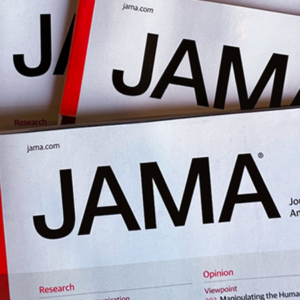פוסט זה זמין גם ב:
עברית
 Geoffrey C. Cloud, MB, BS1; Jeff D. Williamson, MD2; Le Thi Phuong Thao, PhD3; et alCammie Tran, MPH3; Charles B. Eaton, MD4; Rory Wolfe, PhD3; Mark R. Nelson, PhD5; Christopher M. Reid, PhD3,6; Anne B. Newman, MD7; Jessica Lockery, PhD3; Sharyn M. Fitzgerald, PhD3; Anne M. Murray, MD8; Raj C. Shah, MD9; Robyn L. Woods, PhD3; Geoffrey A. Donnan, MD10; John J. McNeil, PhD3
Geoffrey C. Cloud, MB, BS1; Jeff D. Williamson, MD2; Le Thi Phuong Thao, PhD3; et alCammie Tran, MPH3; Charles B. Eaton, MD4; Rory Wolfe, PhD3; Mark R. Nelson, PhD5; Christopher M. Reid, PhD3,6; Anne B. Newman, MD7; Jessica Lockery, PhD3; Sharyn M. Fitzgerald, PhD3; Anne M. Murray, MD8; Raj C. Shah, MD9; Robyn L. Woods, PhD3; Geoffrey A. Donnan, MD10; John J. McNeil, PhD3Key Points
Question In a primary prevention setting, does long-term, daily low-dose aspirin treatment affect the incidence of stroke or intracerebral bleeding?
Findings This secondary analysis of a randomized clinical trial including 19 114 older adults found a statistically significant 38% increase in intracranial bleeding resulting from a combination of hemorrhagic stroke and other causes of intracerebral hemorrhage among individuals randomized to aspirin. The difference in incidence of ischemic stroke was not statistically significant.
Meaning These findings suggest that low-dose aspirin may have no role for the primary prevention of stroke and that caution should be taken with use of aspirin in older persons prone to head trauma (eg, from falls).
Abstract
Importance Low-dose aspirin has been widely used for primary and secondary prevention of stroke. The balance between potential reduction of ischemic stroke events and increased intracranial bleeding has not been established in older individuals.
Objective To establish the risks of ischemic stroke and intracranial bleeding among healthy older people receiving daily low-dose aspirin.
Design, Setting, and Participants This secondary analysis of the Aspirin in Reducing Events in the Elderly (ASPREE) randomized, double-blind, placebo-controlled trial of daily low-dose aspirin was conducted among community-dwelling people living in Australia or the US. Participants were older adults free of symptomatic cardiovascular disease. Recruitment took place between 2010 and 2014, and participants were followed up for a median (IQR) of 4.7 (3.6-5.7) years. This analysis was completed from August 2021 to March 2023.
Interventions Daily 100-mg enteric-coated aspirin or matching placebo.
Main Outcomes and Measures Stroke and stroke etiology were predetermined secondary outcomes and are presented with a focus on prevention of initial stroke or intracranial bleeding event. Outcomes were assessed by review of medical records.
Results Among 19 114 older adults (10 782 females [56.4%]; median [IQR] age, 74 [71.6-77.7] years), 9525 individuals received aspirin and 9589 individuals received placebo. Aspirin did not produce a statistically significant reduction in the incidence of ischemic stroke (hazard ratio [HR], 0.89; 95% CI, 0.71-1.11). However, a statistically significant increase in intracranial bleeding was observed among individuals assigned to aspirin (108 individuals [1.1%]) compared with those receiving placebo (79 individuals [0.8%]; HR, 1.38; 95% CI, 1.03-1.84). This occurred by an increase in a combination of subdural, extradural, and subarachnoid bleeding with aspirin compared with placebo (59 individuals [0.6%] vs 41 individuals [0.4%]; HR, 1.45; 95% CI, 0.98-2.16). Hemorrhagic stroke was recorded in 49 individuals (0.5%) assigned to aspirin compared with 37 individuals (0.4%) in the placebo group (HR, 1.33; 95% CI, 0.87-2.04).
Conclusions and Relevance This study found a significant increase in intracranial bleeding with daily low-dose aspirin but no significant reduction of ischemic stroke. These findings may have particular relevance to older individuals prone to developing intracranial bleeding after head trauma.






